When I started growing flowers, all I thought about were the basics, i.e. how to keep my little babies alive. Any time I even contemplated how to make them all look good together, I got immediately overwhelmed, especially because I was starting everything from seeds, bulbs, and tubers. I began my journey with 3 raised beds and grew primarily annual cut flowers to harvest and give away. The purpose was not to have a beautiful-looking garden and while it was pretty for a few months of the year, the rest of the time, the garden looked pretty bare.
A year into my flower-growing journey, I started dreaming about the cottage flower gardens that I’d seen in photos and wondering if I could have different garden areas where instead of the purpose being just to harvest the flowers, it could be a peaceful place that was magical and charming. My husband,
, who is an artist, also got behind the idea and decided to create us a cottage-style garden in the front area of our home. He’d never done anything like this before, but soon we realized that it was very similar to the painting that he was used to. Now instead of painting on a canvas, he was painting with plants.He quickly became obsessed with creating these cottage gardens and we expanded to other parts of our backyard. We started tearing up grass and pavement and the gardens still keep on coming a few years later. Now I’m up to 7 raised beds that I still use primarily for cut flowers (from seed), and he has a bunch of sections that he creates with plants from the nursery. It’s been such a great bonding experience and I feel incredibly lucky that he’s now just as into gardening as I am!
The other day, Billy and I sat down and had a bit of a retrospective on our gardening journey. Here are some things we’ve learned along the way that I hope are helpful if you are creating your own flower garden:
1) Watch the Sun
The number one thing we think about when deciding which plants to put where in our garden is the sun. We watch how much sun a certain section gets and plant according to the number of hours of sunlight it receives. If you’re looking to plant hydrangeas, azaleas, or camellias, you’ll want to make sure they are in the shade most of the day. But if you’d like roses, dahlias, zinnias, or cosmos, they generally do the best with full sun. There are some exceptions with certain types of roses that do well in the shade or part-shade, so be sure to check the labels before purchasing.
2) Amend Your Soil
When you’re planting in the ground, your soil is of upmost importance. Plants love compost and worm castings because they provide vital nutrients. I also recommend providing organic balanced fertilizer. It’s best to amend the soil a few weeks before you plant so that it gives the microbial life time to integrate. If you have clay soil, add coarse sand. If you have sandy or silty soil, add lots of compost. We add compost and worm castings at the beginning of every growing season.
3) Know Your Toxic vs Non-Toxic Plants
As a new gardener, I was shocked to learn how many common plants that I see in flower arrangements are actually toxic. Knowing which plants are toxic helps us decide where to plant certain flowers that we like the look of, but don’t want anyone else touching. This is especially important if you have kids or animals visiting your garden who like to cozy up to plants. The foxglove (toxic) shown above is in the back of our garden, where few people are roaming. A few others we have that are toxic are hellebore, sweet peas, and delphinium.
On the flip side, we like to put plants that are edible and/or sweet-smelling near the pathways for people to smell and brush up against. Examples of these are white jasmine, Cleveland sage, salvias, and climbing roses (as long as their thorns aren’t too crazy).
4) Use Local Gardens as Your Guide
This is a fun one. We love to go on walks around our neighborhood to check out what plants and flowers are thriving. We’ve found so many unique plants this way and know that they will probably be a good addition to our garden/do well in our zone since they look great down the street from us. If you’re not sure what a certain plant is called and want to identify it, try using the app PlantIn (I use the free version and it’s pretty accurate).
5) Create Focal Points
There are many ways to create focal points in the garden. You can do it with garden decor like a water feature, an arbor with a beautiful vine or rose climbing up it, a beautiful statue, or pots with eye-catching flowers. You can also use statement plants like a large tree within the landscape to anchor an area. Benches and other seating areas are also great ways to create focal points.
6) Add Mulch
Mulch is important in the garden because it helps your plants stay moist, which means less watering and more consistent moisture. It also helps with weed control, adds nutrients to the soil, encourages earthworms, and improves microbial life. We tend to use bark for the in-ground garden and straw (not hay!) in the raised beds, but it’s really a matter of personal preference. You can also use a thick layer of compost or shredded leaves as mulch.
7) Plant Closer Together than the Experts Tell You
This can be a bit controversial, but we plant our flowers closer together than the garden experts tell you to. It’s a matter of personal preference, but we like the garden to look full and for that to happen, the plants need to be close together. It is important, however, to look at the plant information to see how large plants get and not get overeager with having fast-growing plants (like salvias, for example) be too close together.
8) Watch, Edit, and Move Plants
We have moved a lot of plants in the few years we’ve had our garden. Even if you have the best intentions and do your research, sometimes plants don’t do well in one part of the garden. Don’t be afraid to move plants from one location to another or to gift a plant to a new owner if it doesn’t seem happy in your garden.
9) Pick Plants of Varied Heights, Colors, and Shapes
This is where a lot of the artistry comes into play with creating your garden. A big key to having the garden look pleasing to the eye is planting flowers and shrubs that have:
a) Complementary colors
b) Different heights
c) Varied textures (for example, wispy grasses look pretty cool amongst flowers)
d) Different shapes
I like to think of it in terms of making a bouquet. When making a bouquet, you want some greenery, a few focal flowers that blow you away, a few secondary flowers that add some whimsy and texture, and varying heights.
10) Think About Wildlife
A big part of enjoying the garden for us is noticing the birds, bees, butterflies, and ladybugs finding their ways onto the plants. We don’t spray with neem oil or herbicides and choose plants that a variety of pollinators love. It makes for such a fun, ever-evolving garden when you always have different pollinators coming and going. A few of our favorite plants to include are:
A) Native milkweed for the monarch caterpillars and fennel for the swallowtail caterpillars.
B) Cosmos, salvia, lavender, zinnias, snapdragons, sunflowers, feverfew and scabiosa for the butterflies and bees.
C) Tubular and brightly colored flowers for the hummingbirds like salvia “mystic spires blue”, pentsemon, fuchsia, cuphea, and “waverly” sage.
I hope this was a helpful overview! If you have any questions, please post them below!
I also want to know: What’s one flower you have to include in your dream garden—and why?




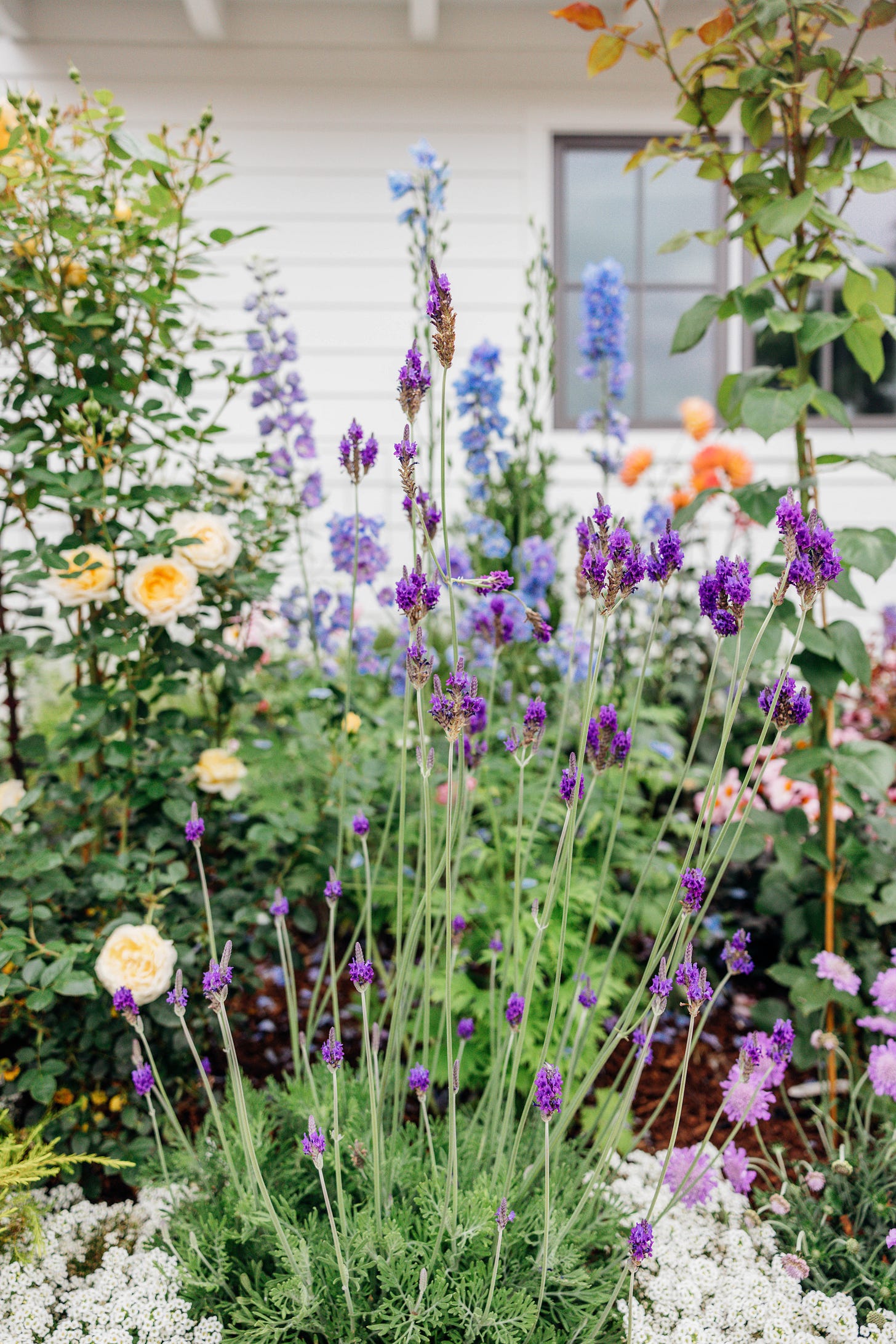
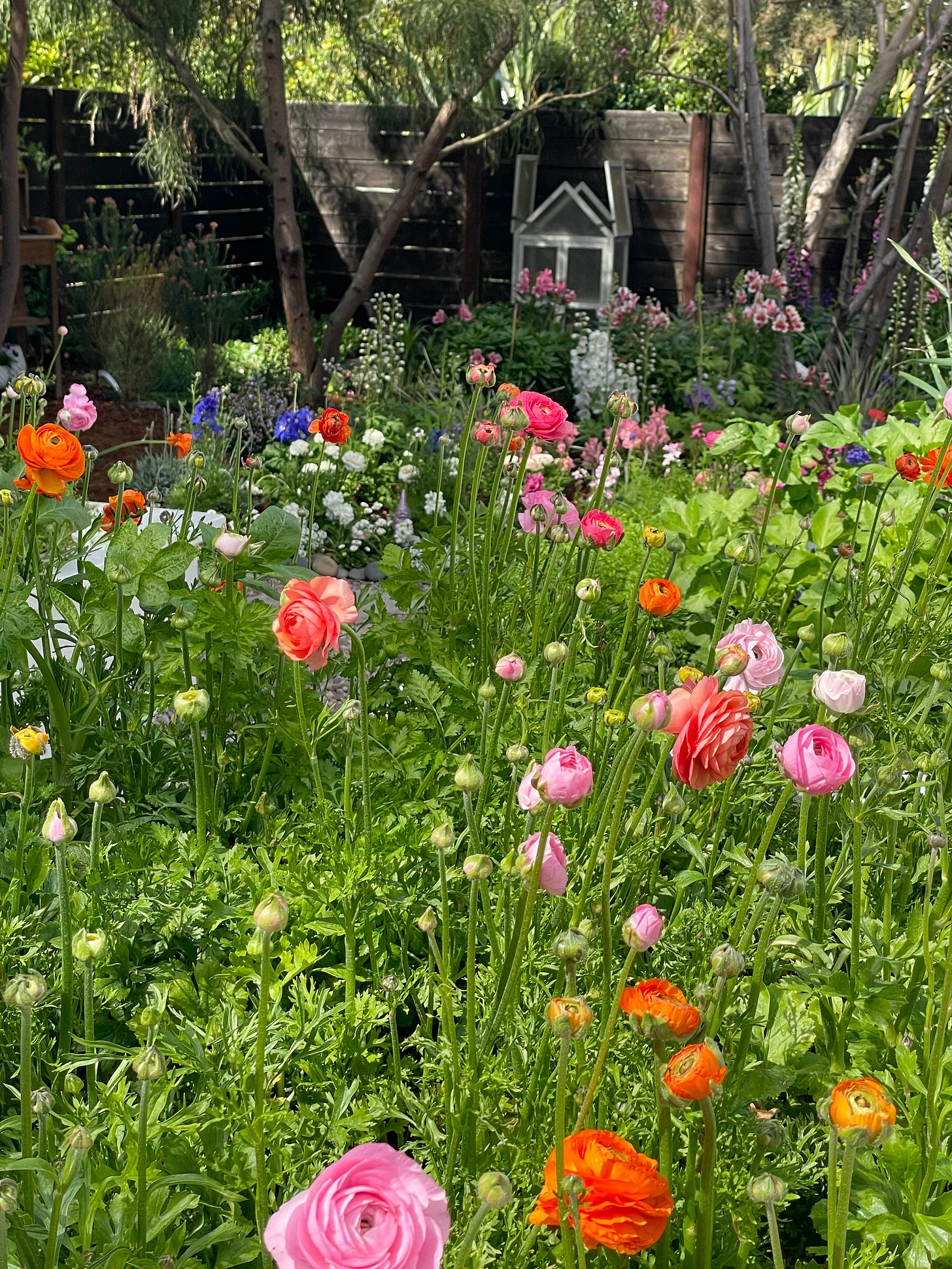
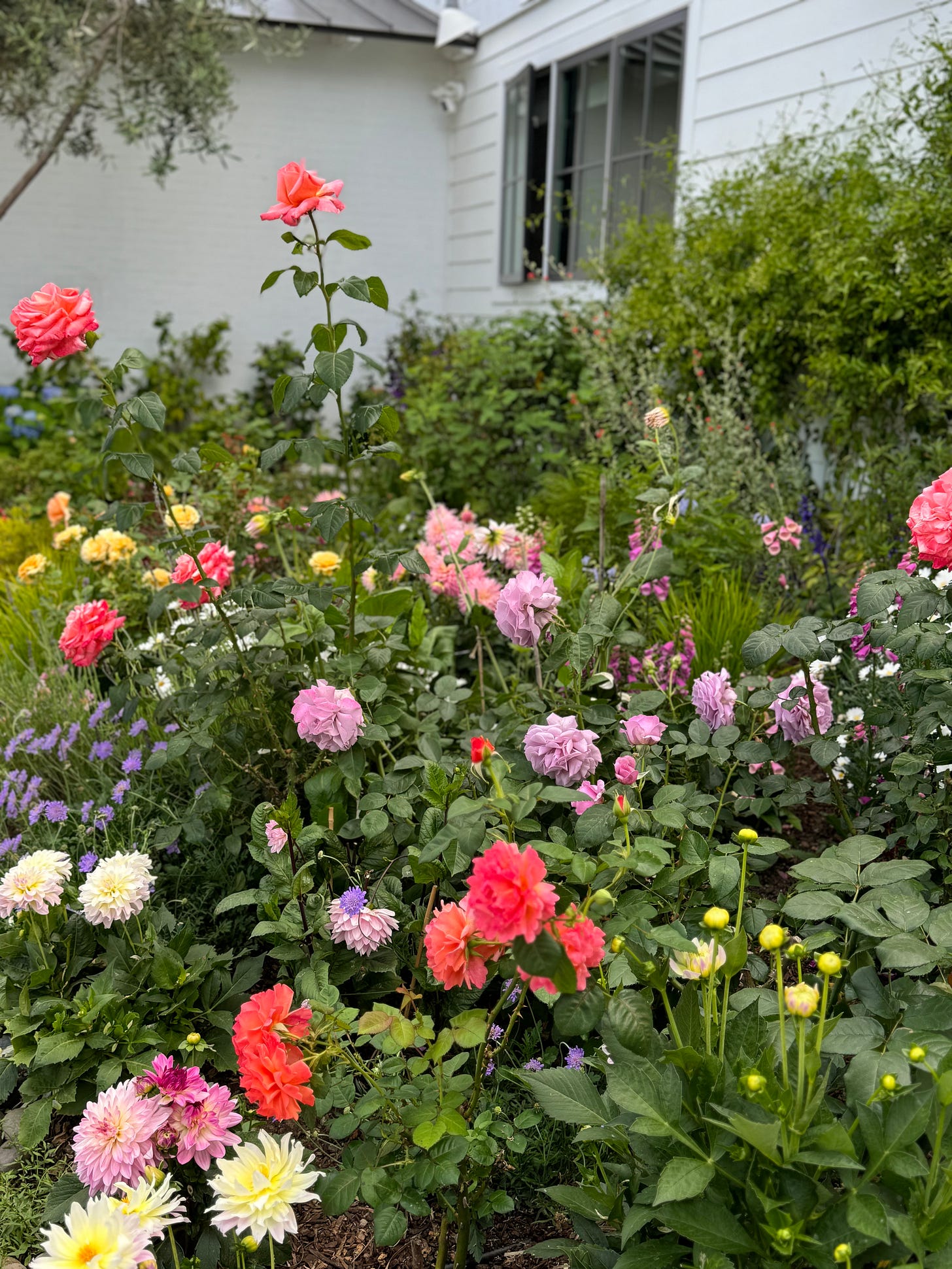
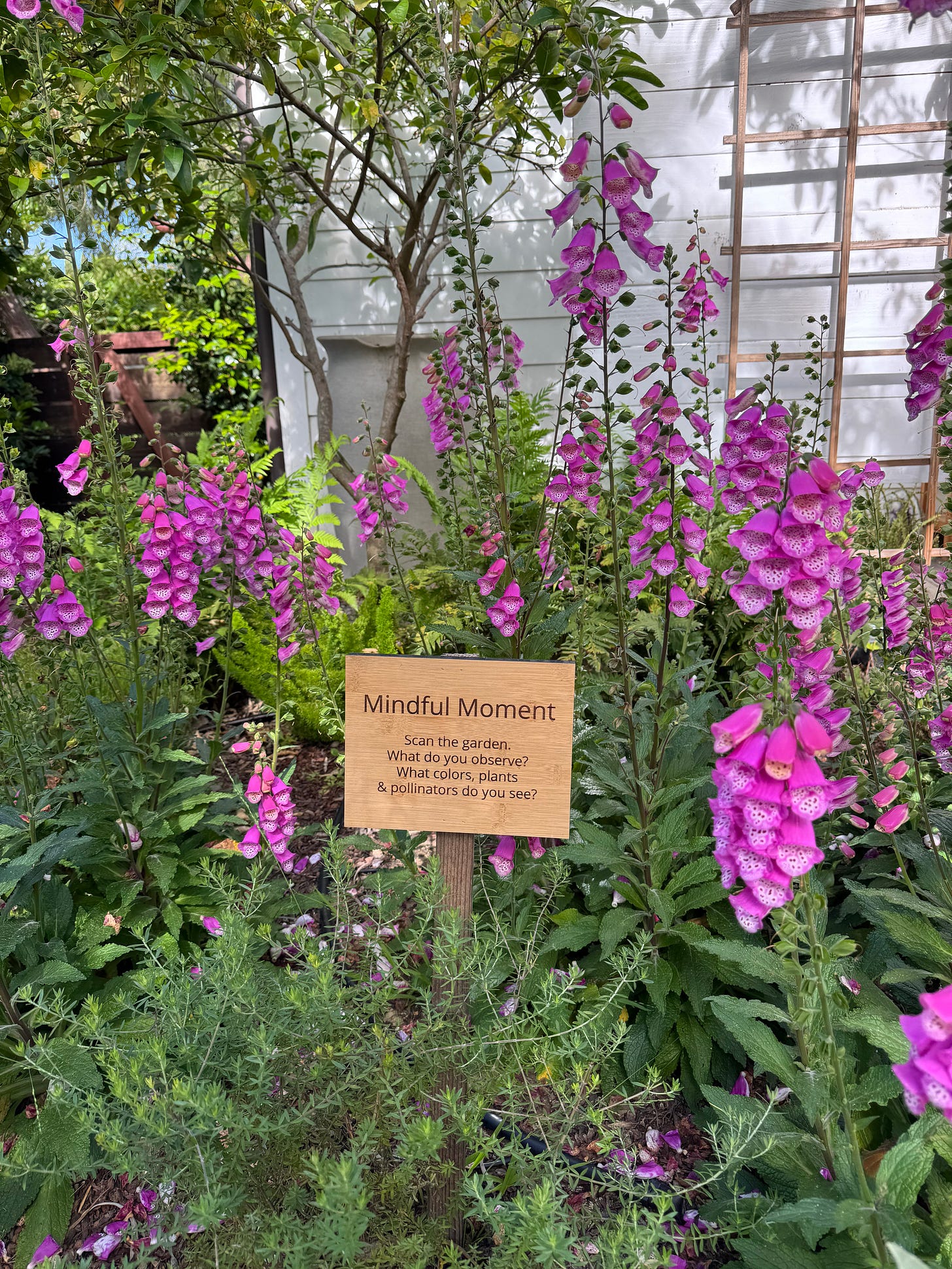
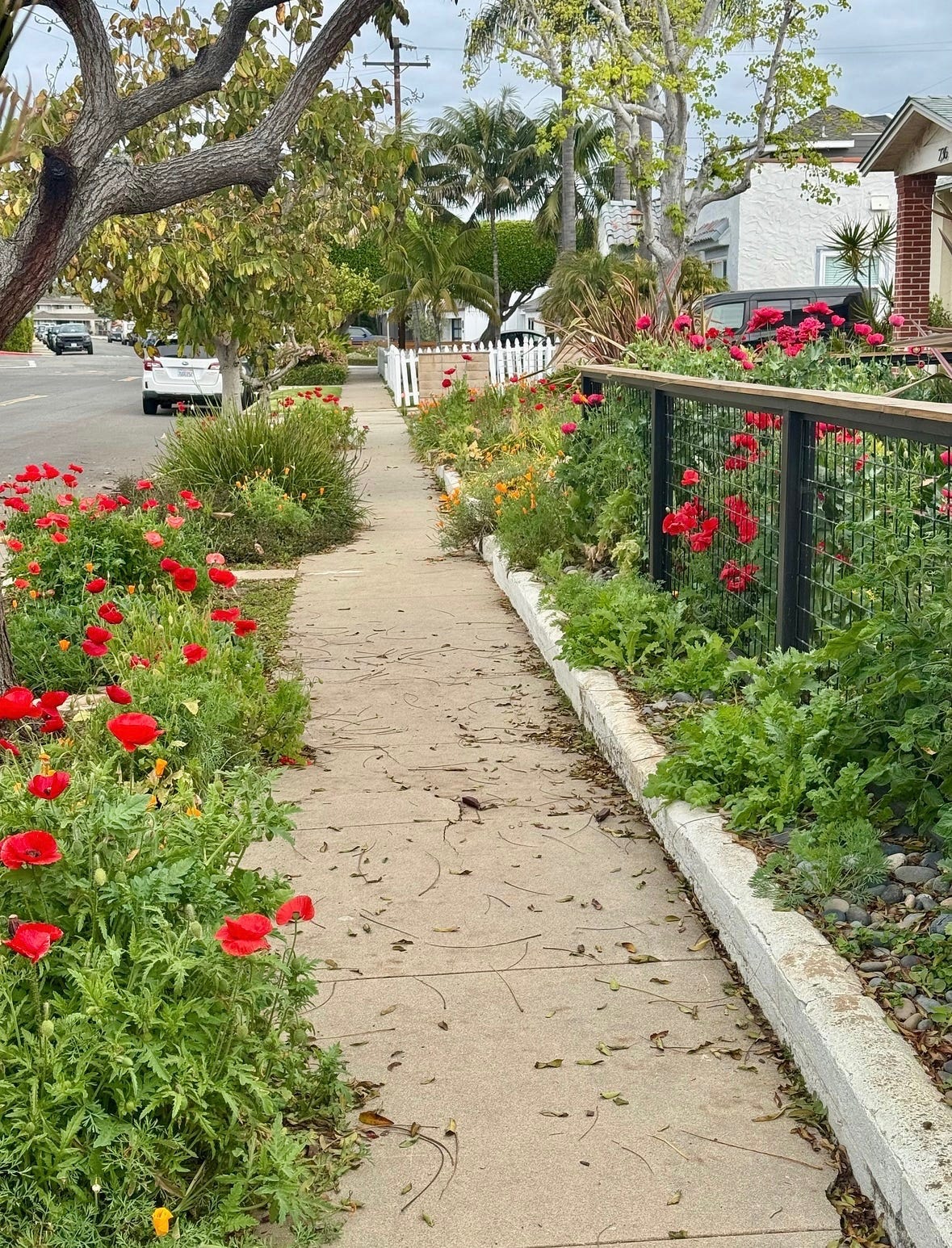
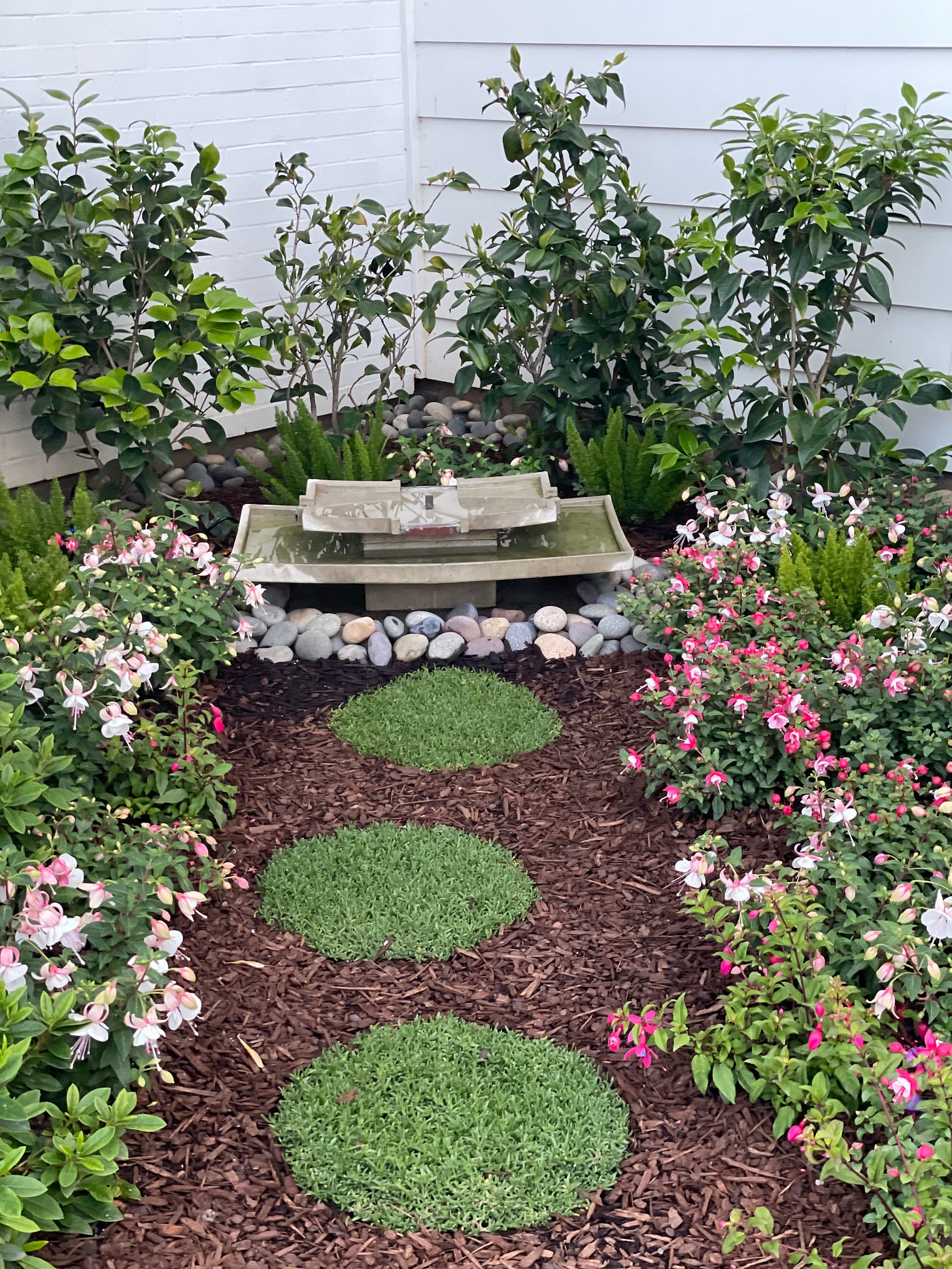
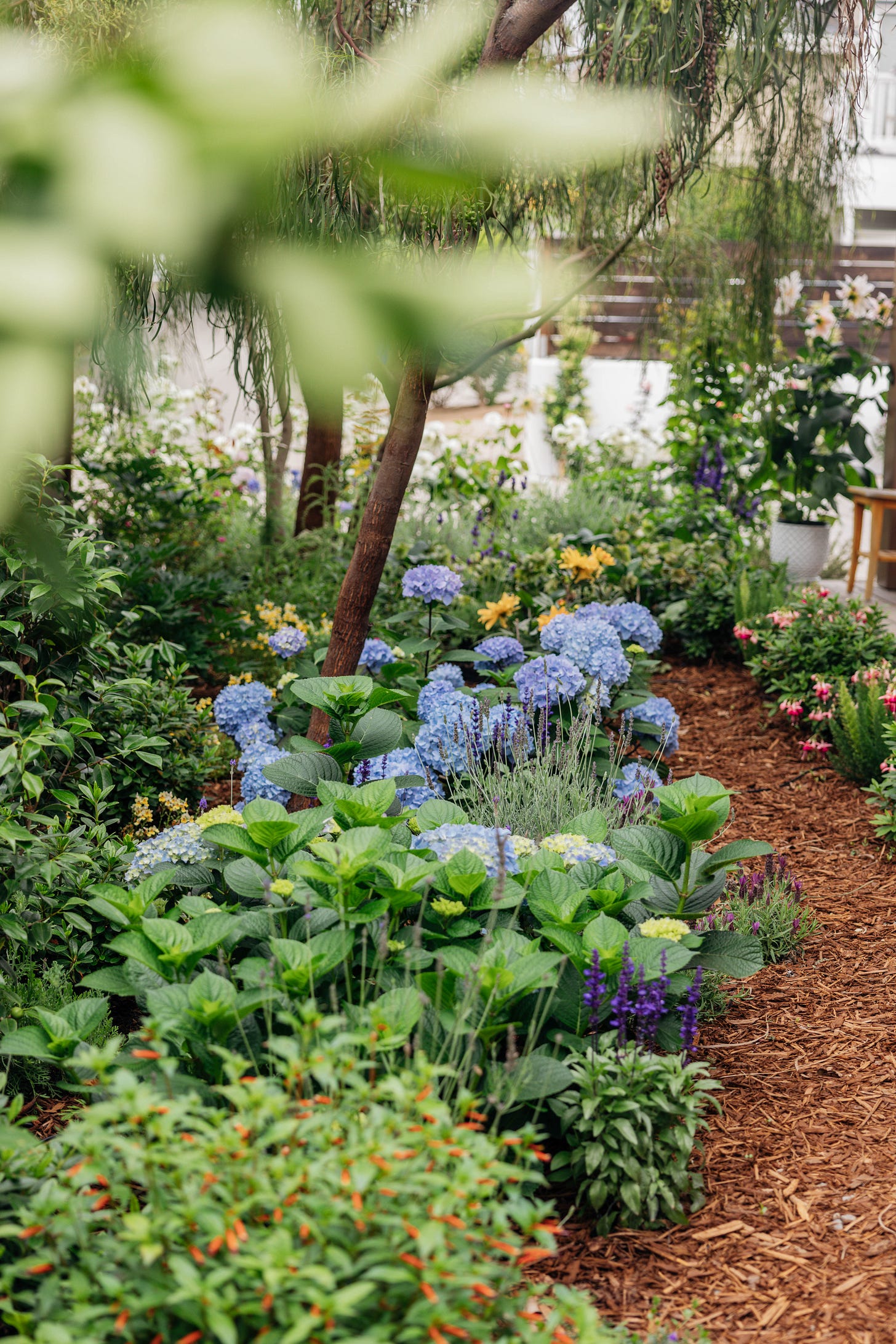
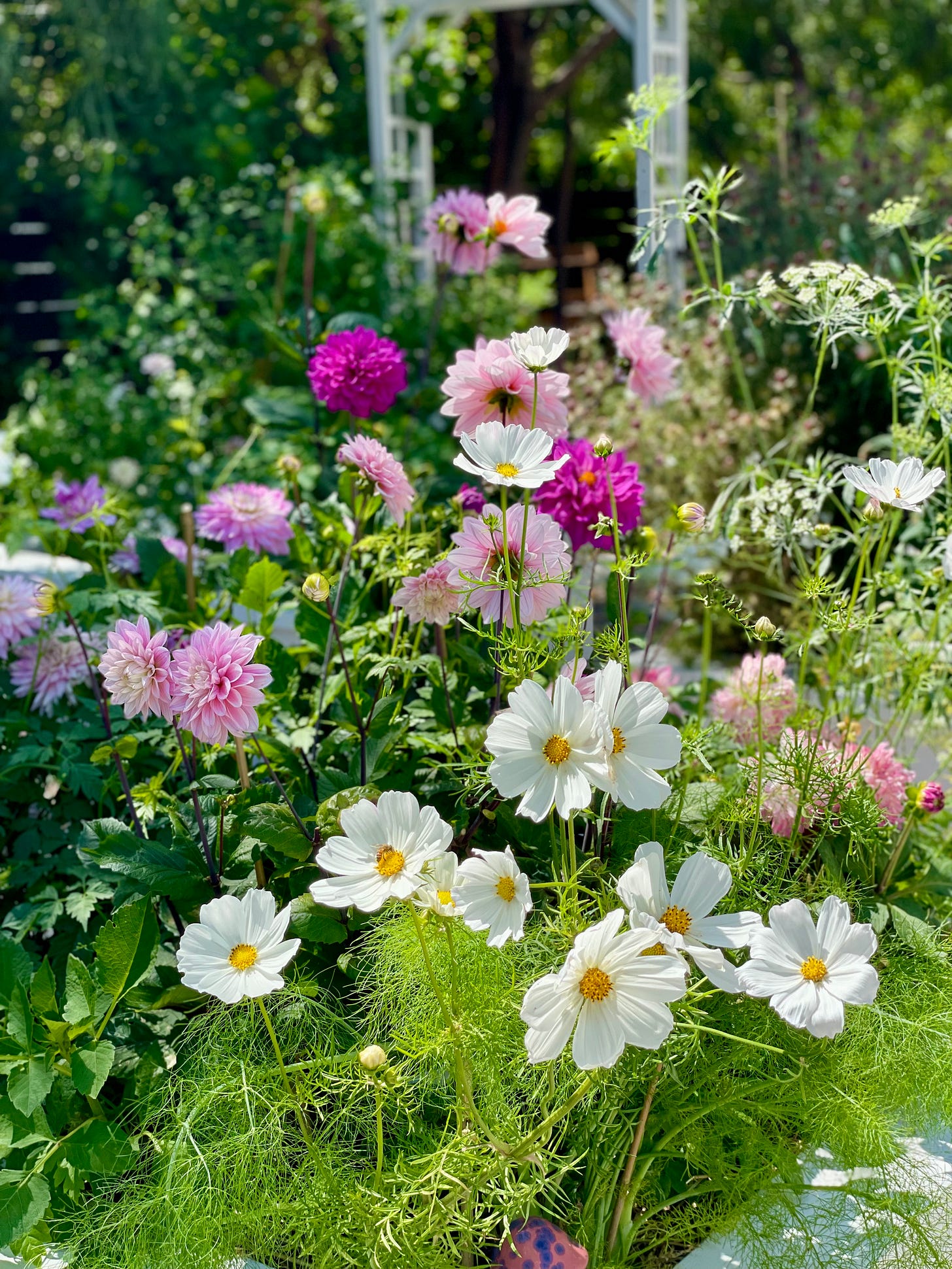
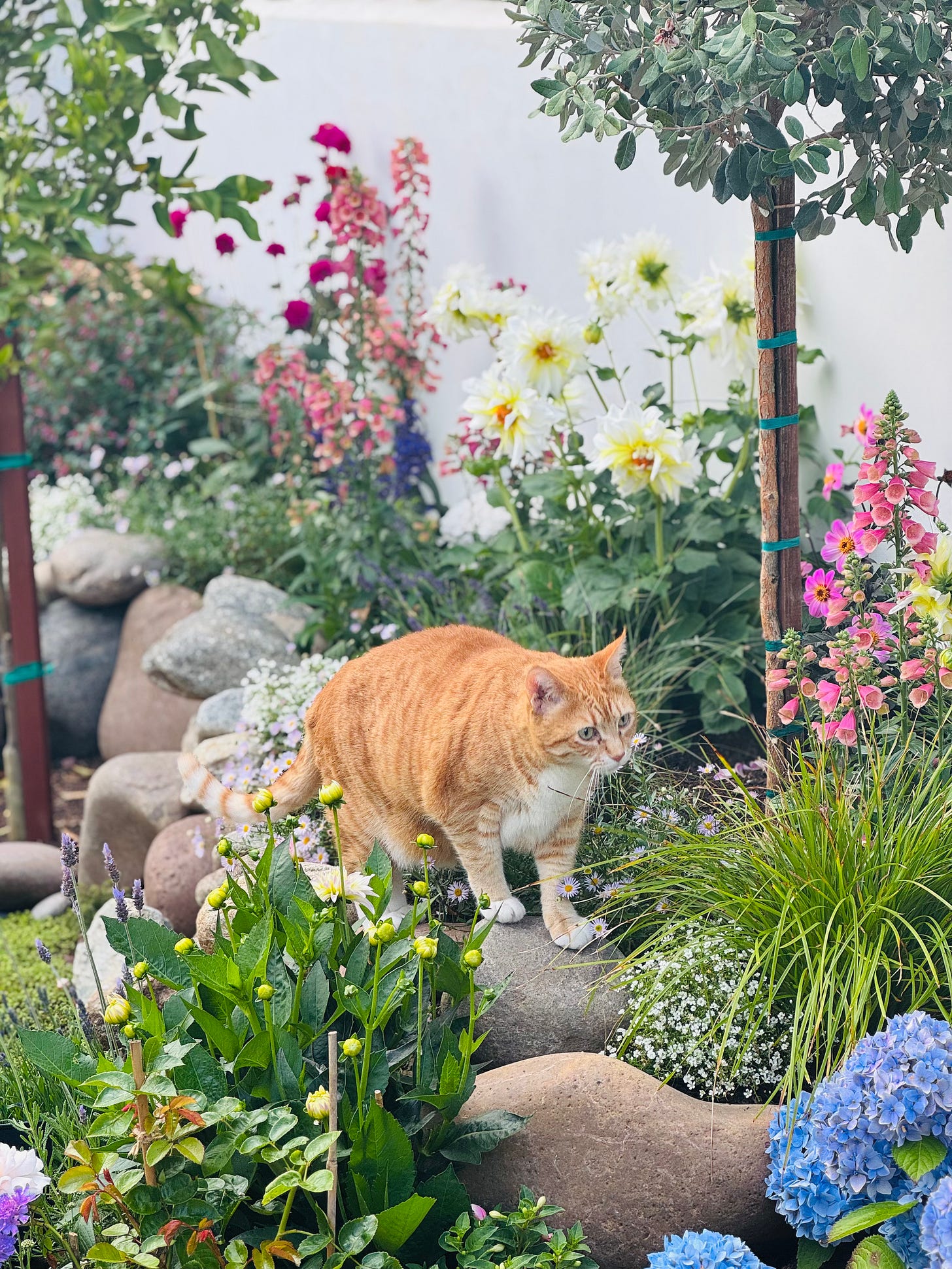

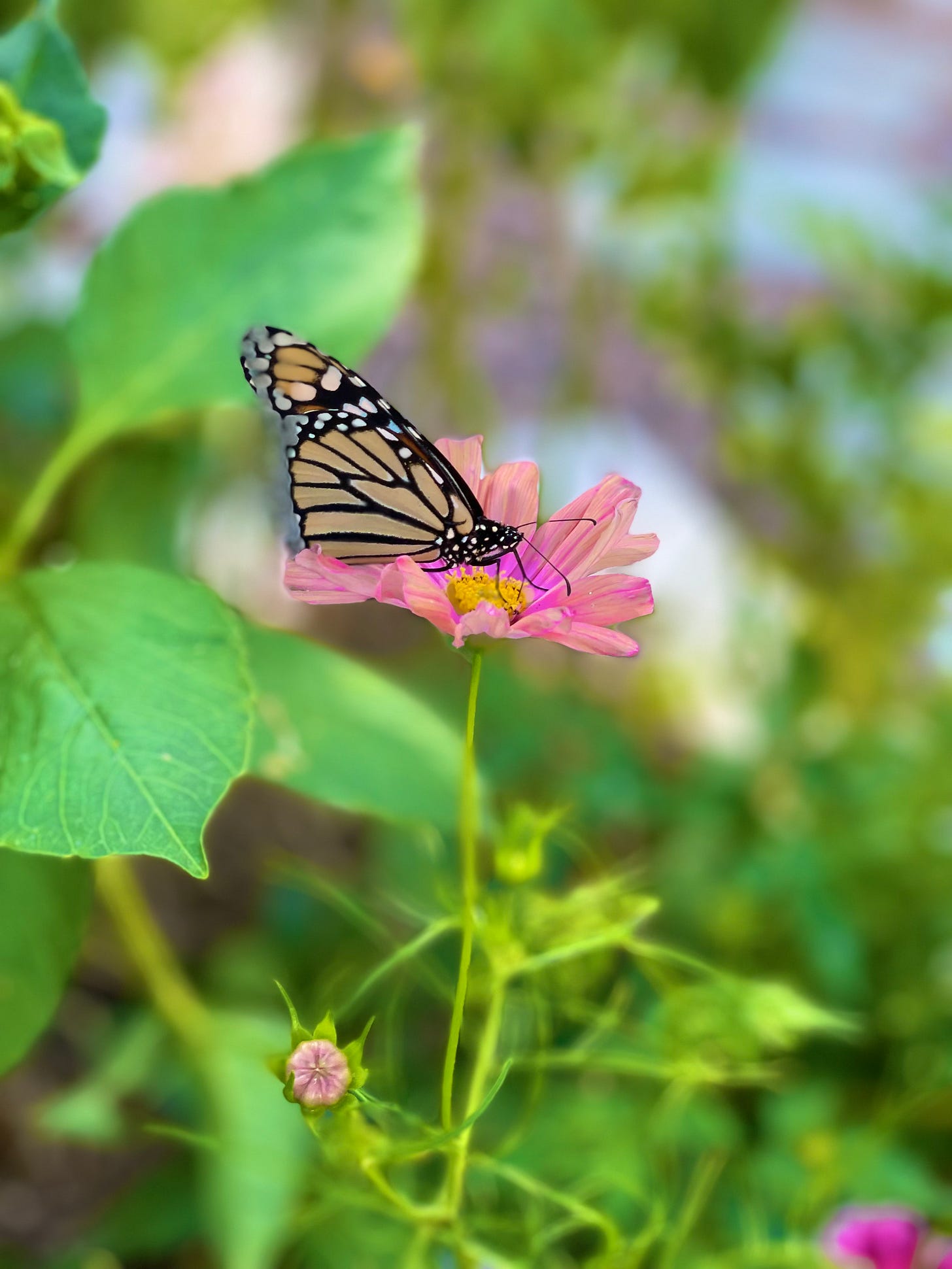
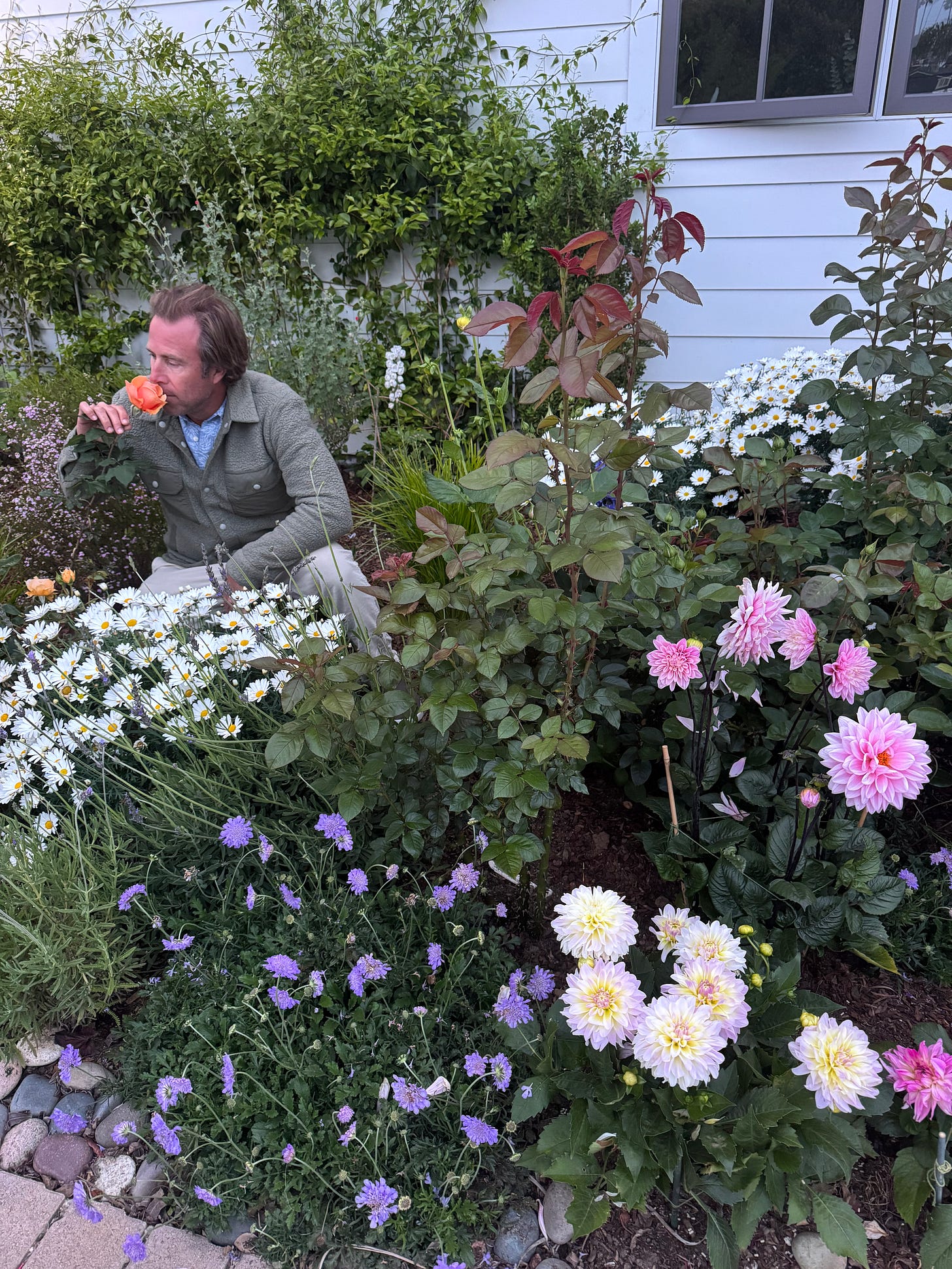
Thank you, Kelli, great tips and plenty of inspiration! Gorgeous pictures!! I'm still at the beginning of my garden adventure and have a tendency to get overwhelmed like you said. I'm very happy if I keep the flowers alive. 😄 But I strive for more, a cottage garden is exactly what I'd like to create, so your post came perfectly timed. 🌿🌸☀️🦋😊
I love all of these tips! Thank you for sharing your lessons and experiences along your journey.